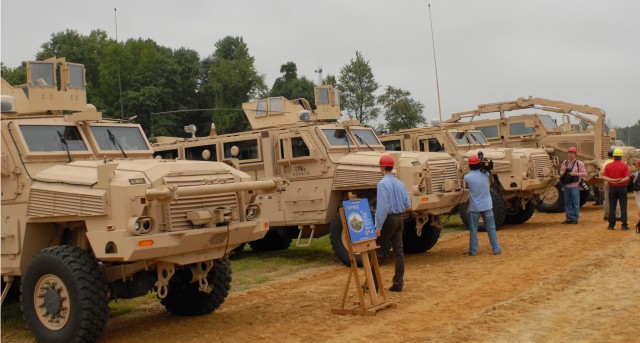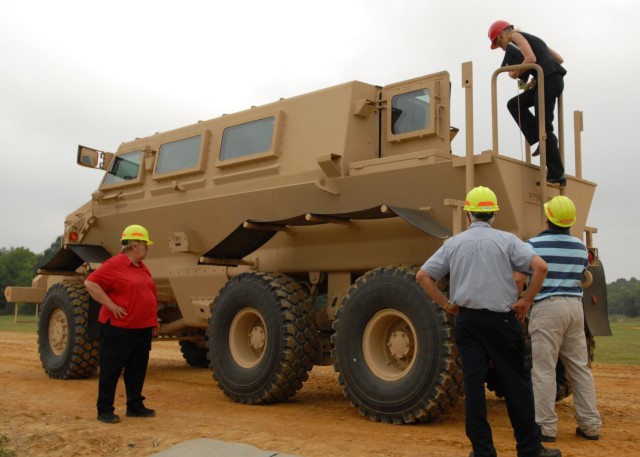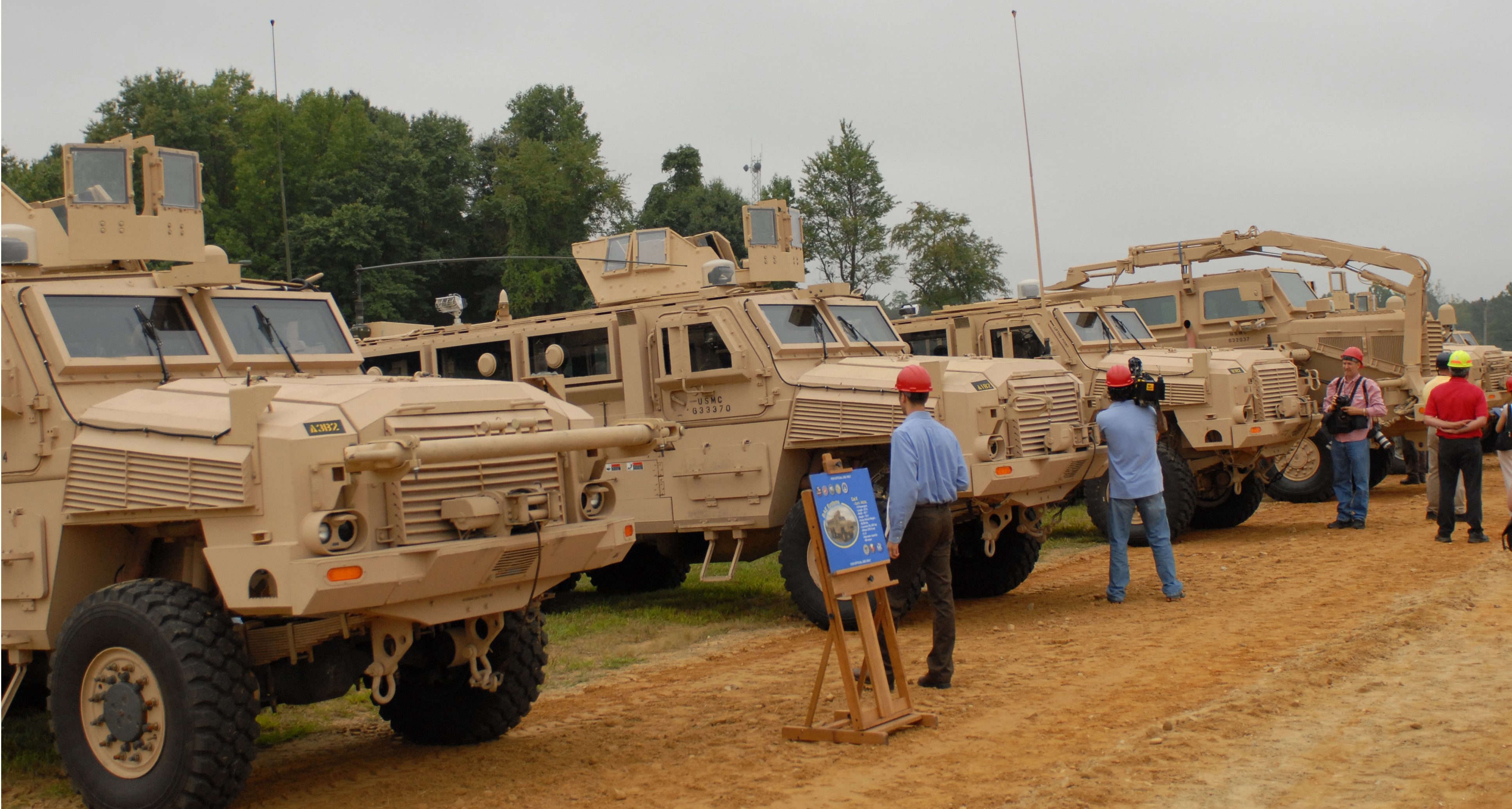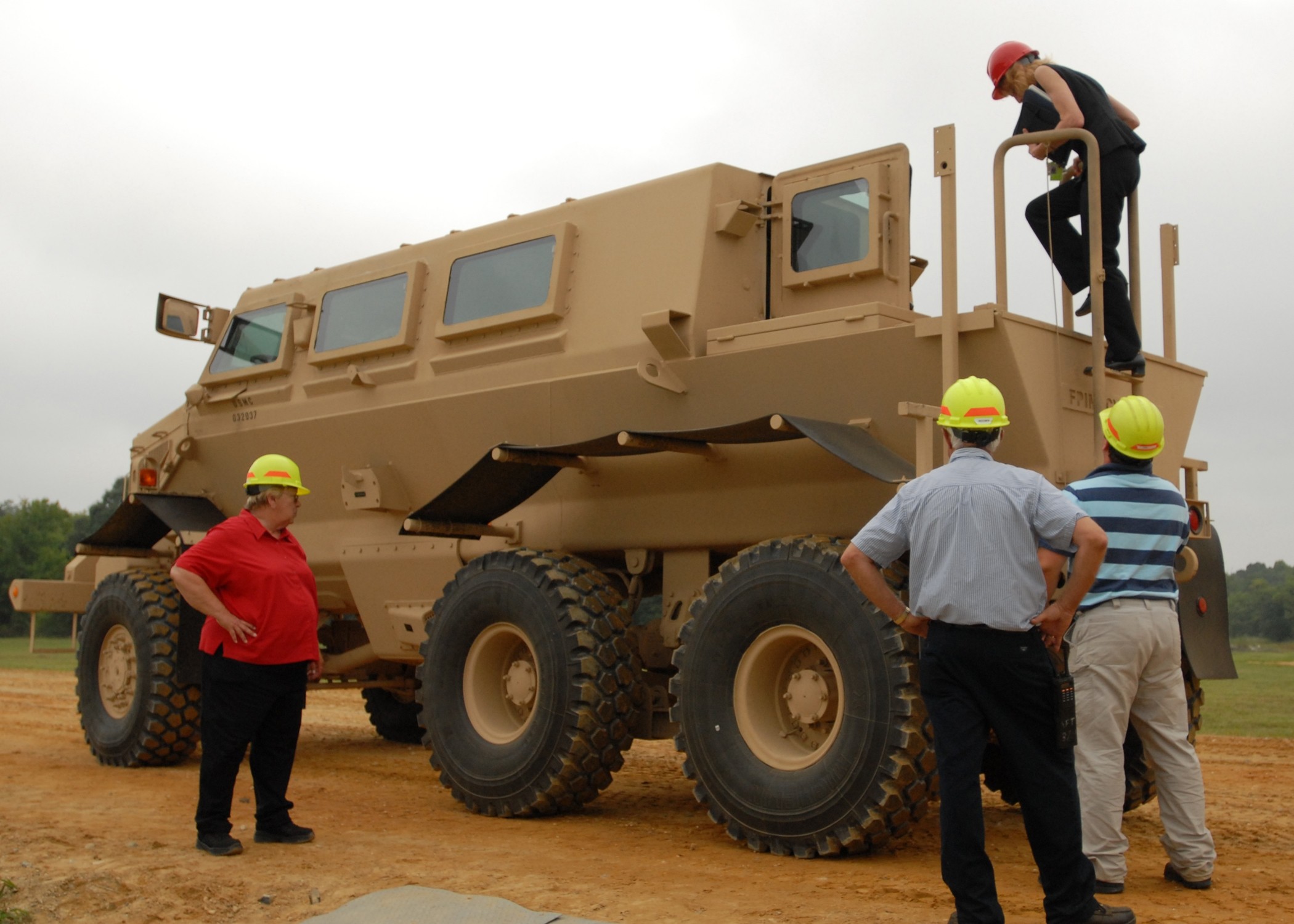ABERDEEN PROVING GROUND, Md., Aug. 24, 2007 - A team of test operators and mechanics here gave members of the media and other visitors a firsthand look today at the mine-resistant ambush-protected vehicle, or MRAP, which is currently being tested on its automotive quality and ability to protect servicemembers' lives.
The Marine Corps has awarded contracts for 6,415 MRAPs to date. The vehicles have raised, V-shaped underbellies, that deflect the force of improvised explosive devices and other blasts from below better than other vehicles in use. But before each armored vehicle transports troops in the field, it undergoes two phases of testing conducted here or at Yuma Proving Grounds in Yuma, Ariz., to gauge how well each MRAP model drives, steers and handles, and whether it can withstand explosions.
"From a performance standpoint, in protecting troops it's done a tremendous job so far. From an operational reliability standpoint, it has exceeded our requirements," said Marine Brig. Gen. Michael Brogan, commander of Marine Corps Systems Command, speaking about MRAPs that passed testing phases and are being used currently in the field.
"One of the big things that MRAPs provide to the troops is that sense of confidence when they go out to do their mission that they're going to come home safe," Brogan said. "I think all the troops in theater are pleased to see these platforms arrive, and it will make them better and more proficient at accomplishing our mission."
Seven vendors currently are producing the armored vehicle - which looks and feels like a Humvee on steroids - in three categories of varying shape, size and capability, to meet servicemembers' myriad mission requirements. Category I vehicles are designed to transport up to four servicemembers, and Category II vehicles hold a maximum 10 troops. The Category III MRAP, also known as the Buffalo, is a mine-clearing vehicle that seats five.
Test operators and officials today ushered some 40 visitors into one of seven MRAPs on display. Passengers who boarded the Cougar, a Category I MRAP made by Force Protection with a roughly $2.8 million price tag, were strapped into interior seating before tearing over bumpy dirt roads at speeds up to 40 miles-per-hour. From the rear of the MRAP looking forward, the vehicle seemed to respond obediently as the driver negotiated with a rather unforgiving landscape pocked with muddy potholes and hills that appeared with the regularity of a sine wave.
Army Col. John Rooney, commander at Aberdeen Testing Center, said during ballistics testing, operators outfit vehicles with "super crash-test dummies." These anthropomorphic models collect information that details how their synthetic body parts -- head, neck, spine, pelvis, legs -- respond to simulated insurgent attacks.
"We collect information in and around the vehicle that tells us how the vehicle performs and how the human bodies within the vehicle would withstand the 'events,'" Rooney said.
Officials would not divulge details about ballistics training or results, but Rooney said the survivability of vehicles currently undergoing testing is "significantly greater" than those tested the past two years.
"I'm confident (that) as a result of what happens here, all of these vehicles today will be better at some point in the future," he added.
When the Defense Department requested MRAP testing late last year, Rooney separated 250 hand-picked operators and mechanics into three groups. To meet the department's "urgent need," groups now work in rotating eight-hour shifts around the clock Monday though Saturday (and half of Sunday), conducting the second phase of automotive and ballistics survivability examinations on the 24 MRAPs here.
"We continue to do everything we can to enable the Department of Defense to get as many MRAPs in theater," Rooney said, "and (for the department to) understand and know very well the capabilities and limitations of these vehicles."






Social Sharing